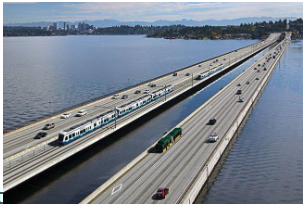Innovation in the field of Engineering
Engineering innovation refers to any product, process, service, or infrastructure in the public or private sector.
Integrating engineering innovation may:
- ● Lead to new products, processes, infrastructure, or services.
- ● Lead to design that promotes human well-being, including gender equality.
- ● Identify new markets and business opportunities.
- ● Develop technologies that meet the needs of a complex and diverse user group.
- ● Enhance global competitiveness and sustainability.
You can think of the Open Grid as similar, in some ways, to the power grid.
In the power grid, energy is generated and transferred from many sources (wind, solar, traditional power plants, etc.). When you need electricity to turn on your light, you flip the switch, and the electric grid provides what you need. Meanwhile, the rest of the pooled energy – collected from many sources including consumers – remains available for other consumers to get what they need.
The Open Grid will bring the same approach to distributed edge computing. It will act as a neutral marketplace where diverse participants publish their available compute resources, as well as their services and requirements. Then, when a user or application needs those resources, the Open Grid will stitch them together dynamically and extend “one-hop” connectivity wherever it’s needed.
With the Open Grid, developers won’t have to worry about underlying infrastructure components. They’ll just express the application’s requirements, and the Open Grid will meet them. Consumers will get better services, since their applications can access far more available compute resources. Enterprises will get better distributed technical capabilities. And cloud and telecom service providers will gain new revenue streams as well as new tools to stitch together next-generation experiences for their customers.
2. 3D Printing:
3D printing is a slow but steady industrial revolution and a very current technology trend. It is a true innovation engineering revolution regarding product design and manufacturing and it is used for an increasing number of applications besides fast prototyping. The addition of metal to the list of 3D printing materials enables the manufacturing of low annual volume and complex-shaped parts for the automotive and aerospace sectors that would be very expensive to produce otherwise. Another example is VRZ2, a fully 3D printed bicycle using titanium. A completely different application is food-making. Chef Bernard Faucher 'cooks' 3D printed pasta at Google headquarters. During the printing process, he can control temperature and cooking time depending on the type of food.
Blog post: https://www.fabbaloo.com/blog/2020/11/4/pcl-construction-discovers-new-3d-printing-use-case
3. Train tracks that float:
Railway tracks are complex structures with important geometrical (curvature and gradient) requirements and are very sensitive to ground movements such as vibrations or earthquakes. This is the big challenge that faced Sound Transit’s new project. On this East Link Bridge—which will be completed in 2023—steel platforms and flexible bearings will let light-rail tracks stay in line. By 2030, 50,000 commuters a day will ride 148,000-pound trains at full speed across the water from Seattle to Mercer Island, Washington.
4. Superconductive materials:
Superconductivity is a quality of some materials that let electricity flow without resistance, with a 100 efficiency. This can be achieved generally at very low temperatures, the former record had been set at -73º C, a very difficult and costly temperature to keep. On the 23rd of May of 2019, this temperature record was broken by a team of scientists from the University of Chicago, who managed to activate superconductivity at -23º C, a great achievement for this kind of technology. This could mark the beginning of a new era for superconductivity, which may have an enormous impact in today's world: electric wires without decreasing currents, extremely fast supercomputers, ultra-efficient electric engines, and maglev trains would be some inventions superconductivity may provide.
Blog post: https://www.futuretimeline.net/blog/2020/10/17-room-temperature-superconductor-future-timeline.htm
5. Floating Wind Farm - Hywind Scotland:
Five turbines bob in the nearly 400-foot-deep waters off the coast of Scotland, generating enough power to meet the needs of around 20,000 homes. This floating-wind-farm project is close to shore, but the design means that turbines could one day live farther out to sea, where the winds are stronger—and the farms are less visible from land. That’s a win-win for people who like clean energy but want to keep their sweet ocean view.
Blog post: https://www.furnacesblog.com/2017/11/30/floating-wind-farm-hywind/







Comments
Post a Comment